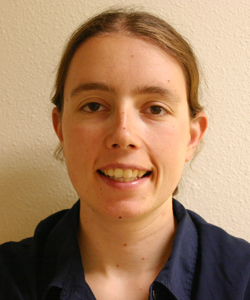Abstract
Seamounts are ubiquitous features of the seafloor, yet our understanding of their origins and geologic evolution remains incomplete. The volcanostratigraphy of seamounts provides insight into controls on constructive and destructive volcanic processes and pathways of fluid flow through oceanic crust. Ocean drilling provides the best opportunity for collecting detailed, continuous cross-sections of seamount edifices. In this project I propose to synthesize results from previous ODP Legs 143, 144, 197 and IODP Expedition 330. The project will focus on compiling and comparing core descriptions from these four expeditions, and will include new original porosity measurements made using an automatic image segmentation technique applied to high-resolution core scans.
Biography
As a Swiss-American growing up in Beijing I had little to do with the ocean until a high school summer program took me to sea to study coastal oceanography. While majoring in geology at Carleton College, I was lucky enough to attend the Williams-Mystic Maritime Studies Program, where I developed an interest in submarine volcanism and seamount formation. I spent a summer working in the lab of oceanography professor Dr. Lisa Gilbert, making physical properties measurements on IODP cores and mapping a superb outcrop of pillow lavas. After graduation I decided to pursue a long-held interest in computer graphics and spent the next two years completing a master’s degree in GIS at the University of Zürich, where I wrote a thesis on automated feature recognition in bathymetric maps. I am currently working on a PhD in marine geology with Dr. Anthony Koppers at Oregon State University. My research uses 40Ar/39Ar geochronology to understand the origin and evolution of the Walvis Ridge seamount trail.







